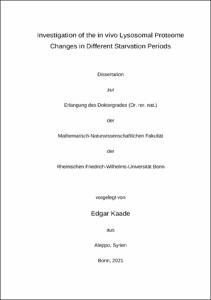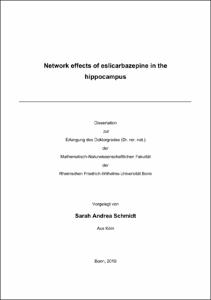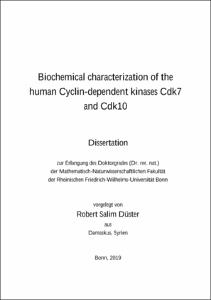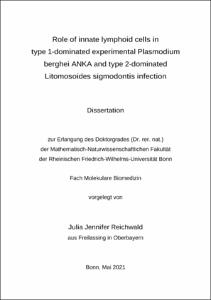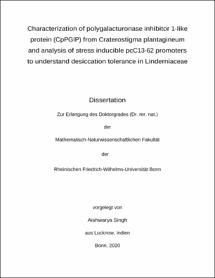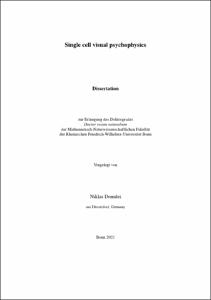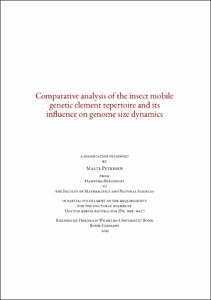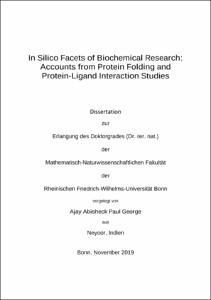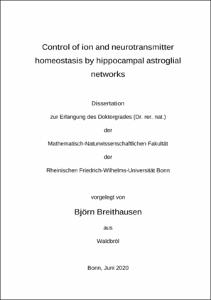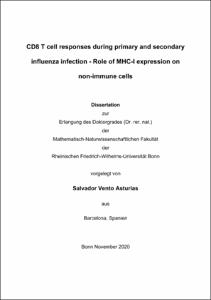E-Dissertationen: Suche
Anzeige der Dokumente 1-10 von 140
Investigation of the in vivo Lysosomal Proteome Changes in Different Starvation Periods
(2021-04-09)
Nutrient deprivation can change the activity and subcellular localization of a protein. The cellular response to starvation includes the autophagy/lysosomal degradation pathway and the nutrient signaling pathway via the ......
Network effects of eslicarbazepine in the hippocampus
(2020-05-18)
Nearly 50 million people worldwide suffer from epilepsy, with 1/3 of the patients remaining without seizure control. This high number emphasizes the importance to develop new anti-epileptic drugs (AEDs) and to understand ...
Biochemical characterization of the human Cyclin-dependent kinases Cdk7 and Cdk10
(2021-08-13)
Protein kinases comprise a large superfamily of enzymes regulating a plethora of cellular processes. Dysregulation of protein kinases, such as loss of activity, hyperactivity or mislocalisation, is often accompanied with ...
Role of innate lymphoid cells in type 1-dominated experimental Plasmodium berghei ANKA and type 2-dominated Litomosoides sigmodontis infection
(2021-10-27)
Malaria and filariasis remain among the biggest health problems in the tropics and subtropics, especially in Africa, and in the case of malaria among the ten most frequent causes of death. The parasites that cause malaria ......
Characterization of polygalacturonase inhibitor 1-like protein (CpPGIP) from Craterostigma plantagineum and analysis of stress inducible pcC13-62 promoters to understand desiccation tolerance in Linderniaceae
(2020-09-02)
The work is divided into two major parts. The first part is the characterization of an important cell wall protein “polygalacturonase inhibitor 1-like protein (CpPGIP)” and in the second part we studied “stress inducible ......
Single cell visual psychophysics
(2021-10-05)
On the one hand, the eye is the human being’s window to the world. On the other hand the eye is a window to the human brain enabling noninvasive and in vivo assessment of nervous tissue. With adaptive optics scanning laser ...
Comparative analysis of the insect mobile genetic element repertoire and its influence on genome size dynamics
(2020-06-10)
This thesis presents comparative genomics studies in insects as well as bioinformatics software development. Its empirical research part is focused mainly on mobile genetic elements, also termed transposable elements. The ......
In Silico Facets of Biochemical Research: Accounts from Protein Folding and Protein-Ligand Interaction Studies
(2020-09-04)
Exponential advancements in computer technology over the last five decades have ubiquitously benefited science and humanity as a whole. Consequent beneficiaries of this surge of computational power include all subfields ......
Control of ion and neurotransmitter homeostasis by hippocampal astroglial networks
(2020-12-16)
The present study addressed the contribution of astrocytic gap junction channels to extracellular K+ clearance. Astrocyte form large networks through gap junction coupling that enables intercellular communication ...
CD8 T cell responses during primary and secondary influenza infection - Role of MHC-I expression on non-immune cells
(2021-09-03)
Influenza infection results in strong immune responses in the lung usually leading to clearance of infection and, in some cases, immune pathology with varying degrees of prognosis. CD8 T cells are believed to be one of the ...


